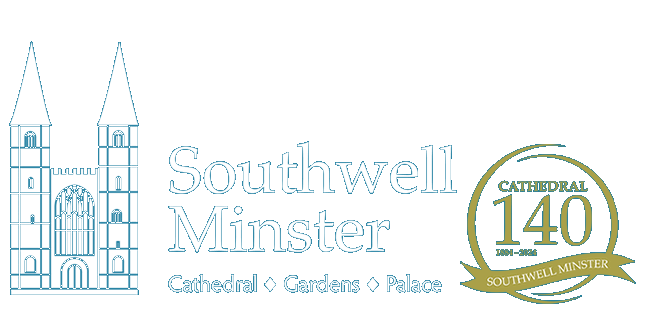History of Southwell Minster
A brief look at some key dates from the Roman period to the granting of cathedral status in 1884
Roman
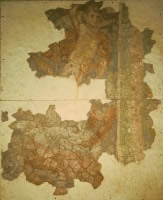
Panel of painted plaster, excavated from the bath-house of the villa
A large Roman villa occupied much of the present-day Minster curtilage. The location was ideal: Southwell lies in a shallow basin, enclosed by hills to the west and north and open eastwards to the Trent Valley. Water was plentiful, with many springs. A panel of painted plaster, excavated from the bath-house of the villa, is now displayed on the wall of the south quire aisle and a fragment of mosaic (perhaps reworked for the Anglo-Saxon church) can be seen under the Bread Pews in the south transept. A large part of the villa was covered when the Minster School complex was built over it in the early 1960s. In 2008/9 these buildings were pulled down and fresh investigations may now take place.
956
King Eadwig of Wessex grants Oskytel, Archbishop of York, lands in Nottinghamshire (possibly the estate of the former Roman villa) and over the next century or so a Collegiate church with a Chapter of canons following a distinct set of rules began to form.
1040
Priests were living in a hall, with a refectory and other buildings. Southwell became the mother church of the southern part of the diocese of York, it was never a monastery. “Minster” means the main, largest, church in an area (around which local parish churches were established, particularly during the medieval period).
1086
Domesday Book provides details on what lands and rights the Archbishop of York possessed in his manor at Southwell and in some other villages close to the town, while the properties that had already been transferred to the Chapter of St Mary's at Norwell, Woodborough and elsewhere are also listed.
1108
The Archbishop of York authorised the rebuilding of the Anglo-Saxon church and the building we know today was started. Very little of the early rebuild remains (on account of later construction) but by the 1120s work had reached the arches below the central tower, which still survive.
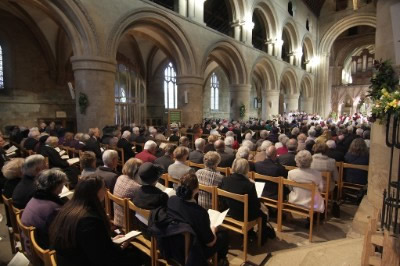
c.1160 – 1170
The “pepperpot” towers were completed.
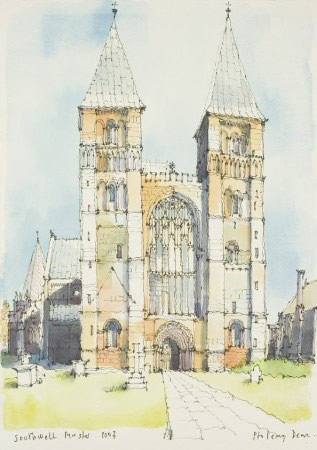
c. 1234
The small Norman quire was replaced by the present Early English Gothic masterpiece.
c.1300
The Minster’s Chapter House – renowned for its extraordinary carved stone leaves and “green men” – is finished. It is today widely considered one of the most beautiful buildings in England and the great architectural historian, Sir Nikolaus Pevsner, devoted a complete book to its glories.
See the Leaves of Southwell page.
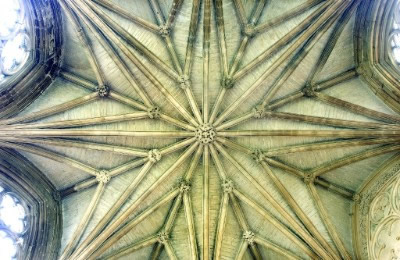
c.1340
The Pulpitum, a delightful example of the Decorated style, is built to close off the arch between the nave and the quire.
The Reformation
Despite the suspension of the Chapter by Henry VIII (1541-3), abolition of chantries (1546-7), tearing down of altars and removal of other signs of 'popery', and seizure of the Minster's lands and furnishings by Edward VI, the Minster came through this turbulent period relatively unscathed since prebendaries who accepted the successive religious changes were permitted to return, while Queen Elizabeth I from 1558 onwards allowed the Chapter to resume most of its former powers.
The Civil War
The building was damaged and may have been used as stables by Roundhead forces (King Charles I spent a final night of freedom at a local inn, now known as The Saracen's Head).
1711
A fire destroys the nave roof which was then rebuilt at a lower, unsatisfactory, pitch giving the interior a “squashed down” feeling.
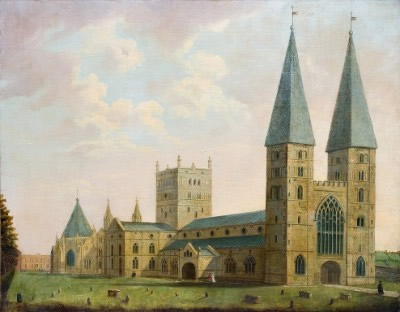
1805
The building is in poor condition and circa 1815 the twin pepperpot spires, deemed unsafe, are taken off.
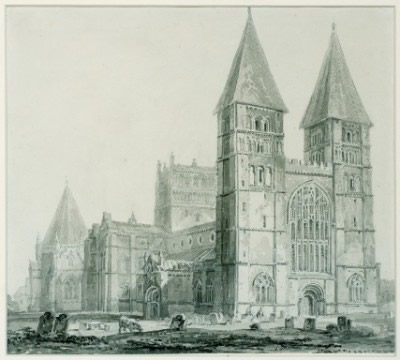
1851
The celebrated Victorian architect, Ewan Christian, begins a sympathetic restoration of the building.
c.1880/8
The pepperpot spires are replaced and the nave roof restored to the steeper pitch.
1884
The Minster becomes mother church of the new diocese. As the seat of the Bishop, it is now properly “Southwell Cathedral” but the historic name – Southwell Minster – is still used.
For fuller information, our booklet Southwell Minster: A History & Guide is available at £5 (plus p&p) from the Minster Shop: cathedralshop@southwellminster.org.uk Tel: 01636 812933
